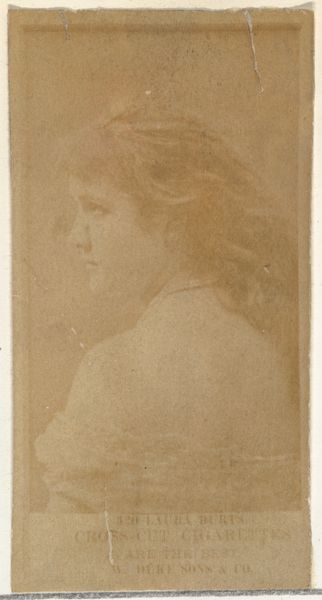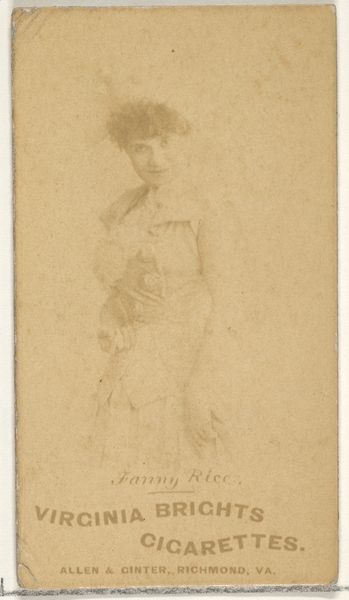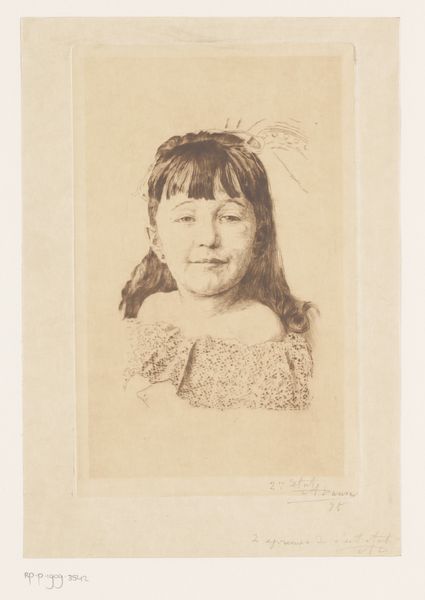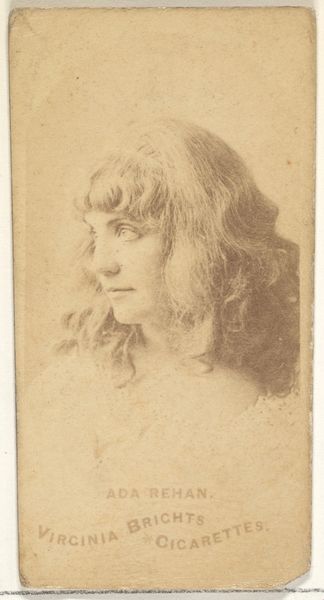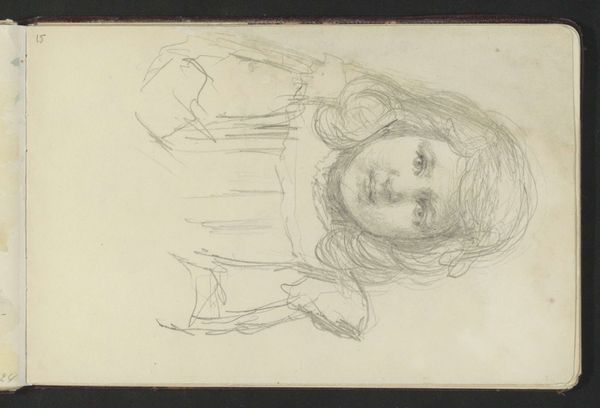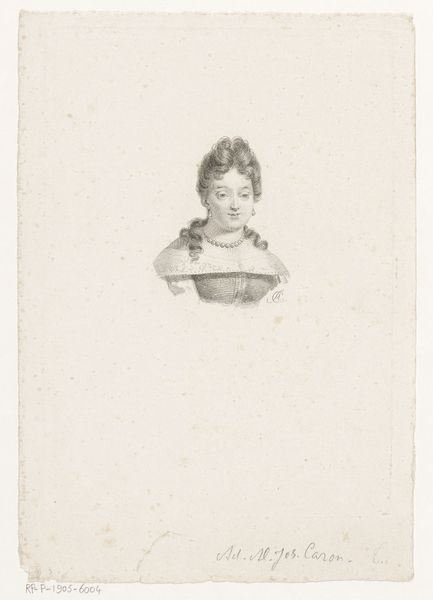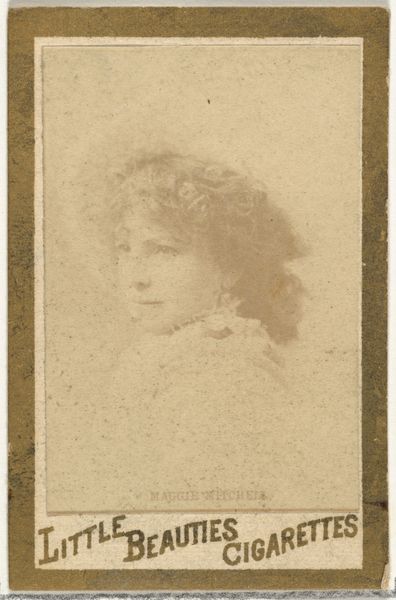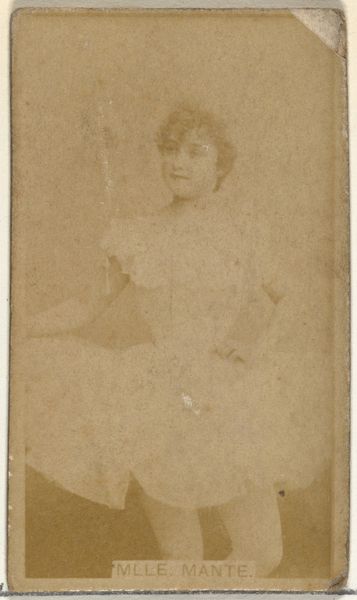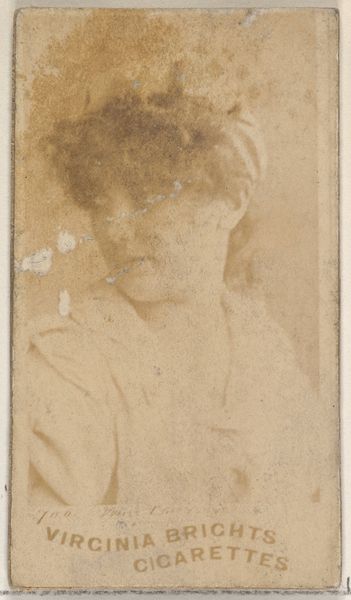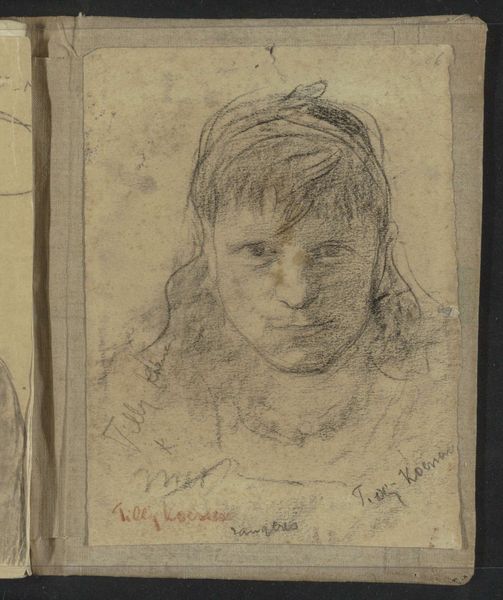
drawing, print, etching, paper
#
portrait
#
drawing
#
ink paper printed
# print
#
impressionism
#
etching
#
figuration
#
paper
Dimensions: height 133 mm, width 75 mm
Copyright: Rijks Museum: Open Domain
Curator: This delicate etching, rendered in ink on paper, is titled "Head of a Woman," and it's attributed to Philip Zilcken. It's currently held here at the Rijksmuseum, catalogued with a production date anywhere between 1867 and 1913. What's your first impression? Editor: The gaze hits you immediately. She possesses a strength in that look, almost a defiance, yet there's a melancholy haze surrounding it. The way the lines fade suggests a fading memory, a fragment. Curator: Indeed. Zilcken's printmaking was deeply influenced by Impressionism, and that fleeting quality you perceive reflects the movement’s concern with capturing ephemeral moments. Editor: I find myself wondering about the pendant she wears. It's blurred but prominent—perhaps a locket? It seems central to understanding who she is, an outward symbol. It’s suggestive of status. Curator: You raise a key point. The etching, although seemingly personal, operates within a structured art market of the late 19th century. Portraiture of this era often involved projecting certain social ideals through carefully selected attributes, not only reflecting status, but also aspiration. This woman might be placed somewhere within the rising middle class, looking to find their place and visual representation in society. Editor: So the pendant may function almost as a stage prop? An accessory within the overall symbolism to say something particular to society? It still radiates a sense of something uniquely personal. The soft edges also soften the intended effect; I'm also pulled back by the stark reality of the era's art market and its intentions to present the desired projection. The symbolism is a tool here in how that projection is created and seen. Curator: Precisely. It is fascinating how Zilcken allows this dance between individual representation and larger societal messages, blurring portraiture. She’s simultaneously an individual and a social type. These etchings were produced as prints that were collected and appreciated in a domestic sphere for display. So, it had to perform within this dual intention to reflect the era. Editor: I will definitely pause a while longer with that tension in mind, that dance between social messaging and individual presence. Curator: I think that's a brilliant lens through which to appreciate the historical power of this portrait.
Comments
No comments
Be the first to comment and join the conversation on the ultimate creative platform.
